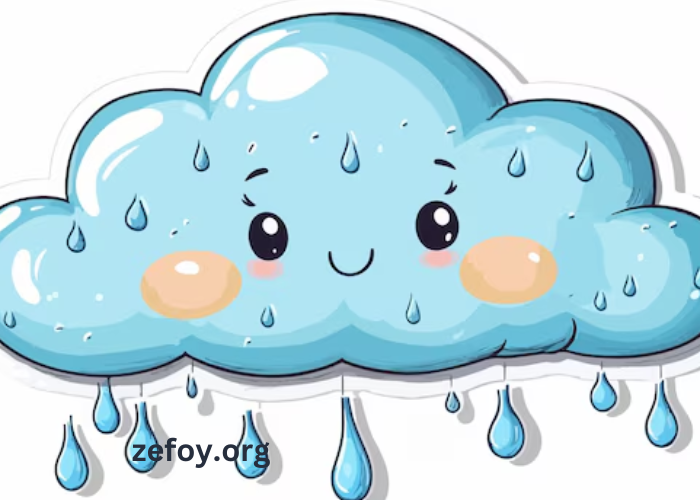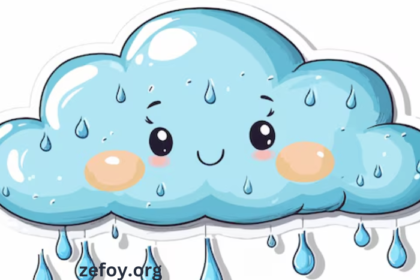Rain has a profound influence on our environment, culture, and emotions. It nourishes the earth, sustains life, and plays a vital role in the water cycle. Beyond its ecological importance, rain often evokes a range of feelings and memories, from nostalgia to tranquility. In the digital age, rain has also become a popular subject in art and design, particularly in clipart, such as clipart:8seb-Vvlrtm= Rain, which can be utilized in various projects to convey mood and atmosphere. This article will explore the significance of rain, its effects on nature, its representation in culture and art, and how clipart can enhance our understanding and appreciation of this natural phenomenon.
How Does Rain Affect the Environment?
Rain is an essential component of the earth’s ecosystem. It replenishes water sources, nourishes plants, and maintains the balance of various habitats. The process of precipitation is crucial for agriculture, as it directly impacts crop growth and soil health. Without adequate rainfall, ecosystems can suffer, leading to drought conditions and affecting biodiversity. For example, forests thrive in regions with consistent rainfall, fostering diverse plant and animal life. Understanding the environmental impact of rain helps us appreciate its importance in sustaining life on our planet.
What Are the Different Types of Rain?
Rain can manifest in various forms, each characterized by different processes and effects. The most common types include drizzle, light rain, moderate rain, and heavy rain. Drizzle consists of very small droplets that fall slowly, often creating a misty atmosphere. Light rain is more substantial but still gentle, ideal for nourishing gardens without causing erosion. Moderate rain can lead to puddles forming, while heavy rain can cause flooding and significant runoff. Understanding these types is essential for weather forecasting and preparation, particularly in regions prone to severe weather events. The representation of these types in visuals, such as clipart:8seb-Vvlrtm= Rain, can provide clearer insights into the variations of rainfall.
How Does Rain Influence Mood and Emotions?
The relationship between rain and emotions is a fascinating subject. For many, rain brings a sense of calm and tranquility, often prompting introspection. The sound of raindrops tapping on windows can evoke feelings of comfort and safety. Conversely, prolonged periods of rain may lead to feelings of sadness or melancholy, sometimes referred to as “the rainy day blues.” This emotional connection is reflected in literature and art, where rain often symbolizes renewal or melancholy. Recognizing how rain influences mood can help individuals better understand their own emotional responses to weather changes.
What Role Does Rain Play in Different Cultures?
Rain holds various meanings in cultures around the world. In some societies, it is celebrated as a blessing, essential for agriculture and prosperity. For instance, many Indigenous cultures honor rain through rituals and ceremonies, recognizing its significance in sustaining life. In contrast, other cultures may view rain as a hindrance, especially in regions where it can disrupt daily activities. For example, monsoon seasons in certain countries are both welcomed for the much-needed water and feared for potential flooding. The cultural significance of rain can be beautifully captured in art, with representations such as clipart:8seb-Vvlrtm= Rain serving as a visual reminder of these diverse perspectives.
How is Rain Represented in Art and Literature?
Artists and writers have long drawn inspiration from rain, using it as a motif to convey a range of themes. In literature, rain can symbolize renewal, cleansing, or even despair. Classic works, such as “The Great Gatsby,” utilize rain to enhance emotional depth, reflecting characters’ inner turmoil or moments of clarity. In visual art, rain has been depicted in various styles, from Impressionist paintings that capture the ethereal quality of rainfall to modern digital art. The use of clipart:8seb-Vvlrtm= Rain allows artists to incorporate the essence of rain into their projects, adding layers of meaning and emotion.
What Are the Benefits of Rainwater Harvesting?
Rainwater harvesting is an environmentally friendly practice that captures and stores rainwater for future use. This sustainable approach provides numerous benefits, particularly in regions facing water scarcity. By collecting rainwater, individuals can reduce their reliance on municipal water sources and lower utility bills. Additionally, rainwater harvesting can alleviate pressure on stormwater drainage systems, reducing the risk of flooding. It also promotes self-sufficiency and encourages responsible water management. The representation of rainwater harvesting systems through clipart:8seb-Vvlrtm= Rain can help educate communities about the importance and practicality of this sustainable practice.
How Can Rain Impact Agriculture?
Rain is a double-edged sword for agriculture; while it is essential for crop growth, excessive rainfall can lead to challenges. Adequate rainfall promotes healthy crops, replenishes soil moisture, and supports irrigation systems. Farmers often rely on rain patterns to plan planting and harvesting schedules. However, too much rain can lead to soil erosion, waterlogged fields, and crop diseases. Understanding the relationship between rainfall and agriculture is crucial for farmers and policymakers alike. Visual representations, including clipart:8seb-Vvlrtm= Rain, can effectively illustrate these dynamics and the importance of balanced rainfall for successful farming.
How Can We Prepare for Rainy Weather?
Preparation for rainy weather is essential to mitigate its potential impacts on daily life. Ensuring proper drainage systems and using water-resistant materials can help reduce flooding and property damage. On a personal level, having appropriate clothing, such as waterproof jackets and sturdy footwear, can make navigating rainy days more comfortable. Additionally, creating an emergency kit with essentials can provide peace of mind during severe weather. Resources like clipart:8seb-Vvlrtm= Rain can serve as visual reminders of the need for preparation and planning.
Conclusion
Rain is a natural phenomenon that significantly impacts our environment, culture, and emotions. From its crucial role in supporting ecosystems to its representation in art and literature, rain is woven into the fabric of our lives. Understanding the different types of rain, its effects on mood, and the benefits of practices like rainwater harvesting enriches our appreciation for this essential element. Visual resources, such as clipart:8seb-Vvlrtm= Rain, serve to enhance our understanding and convey the beauty and significance of rain in our world. As we continue to explore the multifaceted nature of rain, let us embrace its beauty and the life it nurtures.




